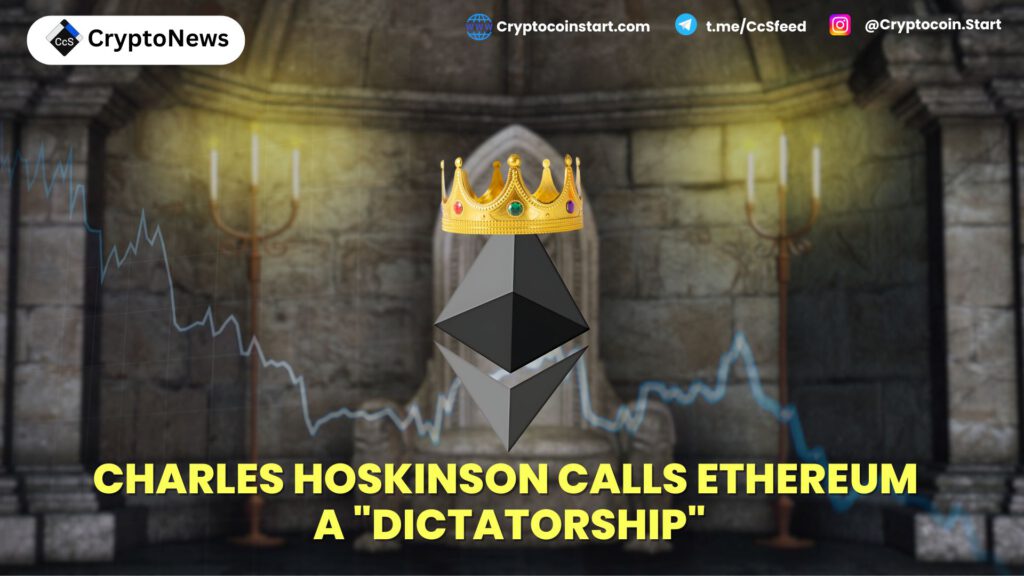
Cardano’s Voltaire-Era Governance Overhaul
Cardano is making significant strides toward establishing a robust governance framework with its Voltaire-era overhaul. Founder Charles Hoskinson asserts that this new model will prevent the blockchain from becoming a “dictatorship” like Ethereum or descending into the “anarchy” of Bitcoin. Speaking at the Token2049 event in Singapore, Hoskinson highlighted how Cardano’s governance model seeks to balance decentralization with effective decision-making, setting it apart from its competitors.
Critique of Ethereum’s Governance Structure
Hoskinson didn’t hold back when critiquing Ethereum’s governance, arguing that it is overly reliant on its co-founder, Vitalik Buterin. He stated, “Everybody looks to him for the roadmap. Everybody looks to him for inspiration, and he’s also the only person who has enough power to rally people.” This centralization of influence, Hoskinson argues, risks creating a single point of failure for Ethereum.
He posed critical questions about Ethereum’s sustainability in the absence of Buterin, asking, “If you were to remove him from the equation right now, what’s the next hard fork going to look like, and how quickly can they actually get there?”
Comparing Governance Models
According to Hoskinson, Ethereum’s heavy dependence on Buterin moves it closer to a “dictatorship,” countering the decentralized governance system it was originally designed to embody. He pointed out that key decisions, such as the network’s shift away from sharding and towards layer-2 rollups for scalability, have been heavily influenced by Buterin’s vision rather than through community-driven governance.
In contrast, Bitcoin’s governance structure, according to Hoskinson, resembles “anarchy.” He claims that Bitcoin’s simplicity makes it resistant to innovation, leaving it stagnant due to a lack of leadership and clear decision-making mechanisms.
Cardano’s Governance Trilemma
Cardano’s Voltaire-era governance overhaul aims to address what Hoskinson calls the “governance trilemma”—balancing efficiency, effectiveness, and integrity. The framework introduces a members-based organization called Intersect, along with a system of delegated representatives to manage governance topics effectively.
Key Features of Cardano’s New Governance Model
- Chang Hard Fork: The recent Chang hard fork has transformed ADA into a governance token, empowering holders to elect representatives and vote on development proposals.
- Intersect Organization: This members-based organization includes researchers and engineers to ensure informed governance decisions.
- Decentralized Decision-Making: The new model allows elected representatives to collaborate using blockchain-based governance tools, maintaining a unified vision without sacrificing decentralization.
- Upcoming Constitution: A forthcoming Cardano constitution aims to set limits on governance processes, ensuring accountability and flexibility.
Ethereum Whale Activity Raises Concerns
In related Ethereum news, the recent deposit of 3,510 ETH into Kraken by a long-dormant whale has stirred speculation about market implications. This wallet, which has been inactive for over two years, is tied to one of Ethereum’s early investors from its initial coin offering (ICO) in 2014. The whale originally acquired 150,000 ETH for just $46,500, a return on investment that is now estimated at $389.7 million.
Market Reactions to Large Transactions
Such significant transactions often create ripples in the market, with analysts speculating about potential sell-offs. The deposit into Kraken has raised concerns that the whale may be preparing to sell, which could increase selling pressure on Ethereum. Additionally, another whale wallet linked to Genesis Trading moved 5,000 ETH—valued at approximately $12.9 million—to FalconX, intensifying worries about large Ethereum holders liquidating their assets.
Potential Market Implications
The timing of these whale activities has led to increased volatility in Ethereum’s market, which is currently trading around $2,637. Analysts are closely monitoring whether these deposits signal a broader sell-off or are isolated incidents.
- Market Speculation: Large deposits into exchanges are often interpreted as bearish signals, leading to potential price declines.
- Impact on Short-Term Traders: Traders relying on short-term price movements may react swiftly to whale activities, exacerbating volatility.
- Long-Term Holders’ Perspective: Long-term holders, or “HODLers,” may view these fluctuations as temporary, maintaining confidence in Ethereum’s fundamentals.
Conclusion
The recent movements by Ethereum whales, coupled with Charles Hoskinson’s critiques of Ethereum’s governance, highlight significant dynamics in the cryptocurrency space. As Cardano advances its governance model to promote decentralization, Ethereum faces challenges related to its reliance on a single leader. The market will be watching closely to see how these developments unfold and what impact they may have on Ethereum’s price and governance structure in the future.

